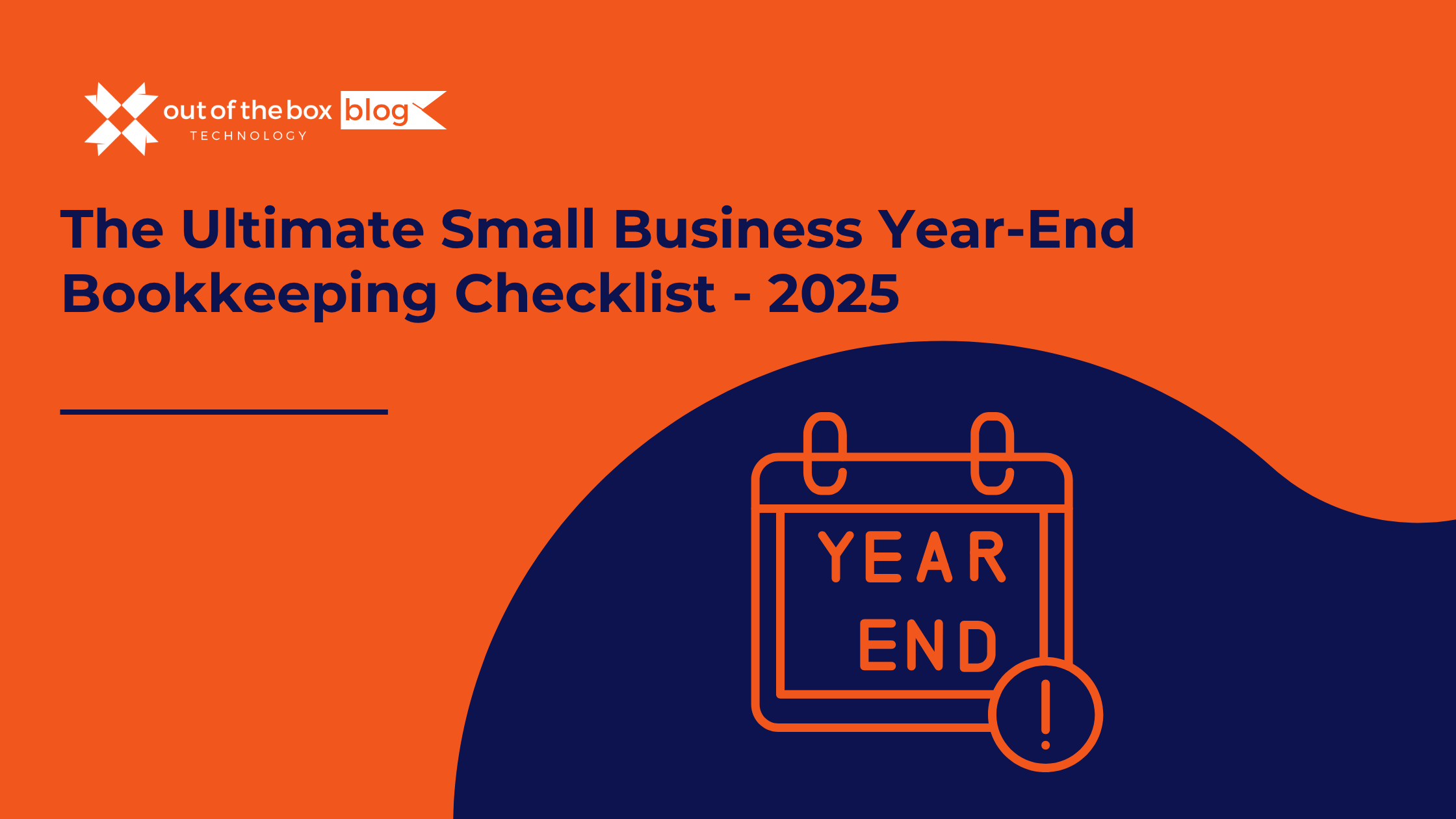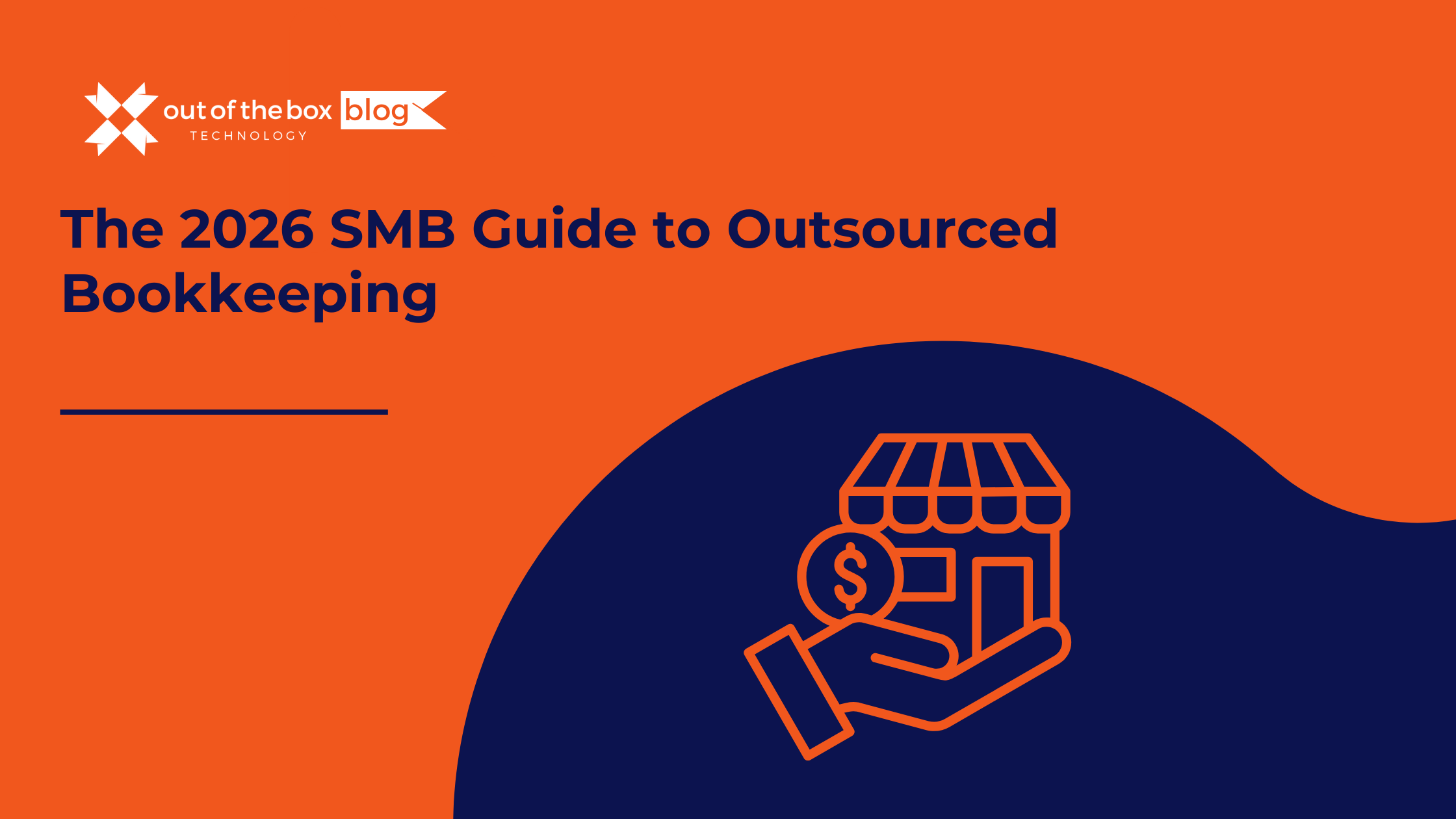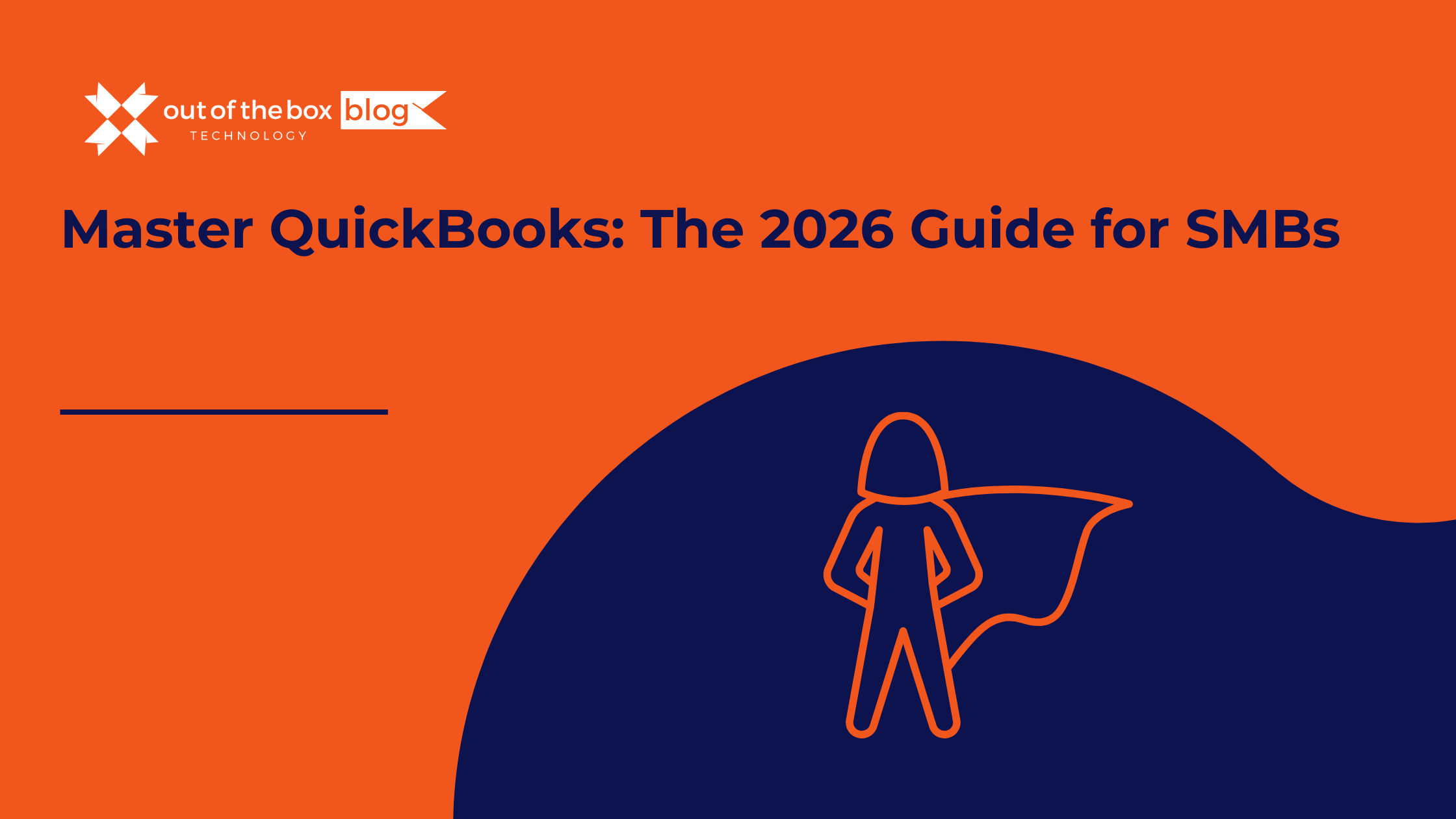Here is a detailed, 2000+ word blog post designed to be the ultimate authority on its topic, written in the expert, helpful voice of Out of the Box Technology.
Meta Title: The Ultimate Small Business Year-End Bookkeeping Checklist (2024-2025)
Focus Keyword: Small Business Year-End Bookkeeping Checklist
Meta Description: Don’t just close your books, master them. Our ultimate year-end bookkeeping checklist guides small businesses through every critical step, from reconciliation to creating tax-ready financial reports for a profitable 2025.
The Ultimate Small Business Year-End Bookkeeping Checklist (2024-2025)
The fourth quarter. For many small business owners, these three words bring a mix of holiday hustle and a familiar, low-level dread. Beneath the push for end-of-year sales and holiday parties, a financial clock is ticking, counting down to one of the most stressful and critical tasks in the business calendar: the year-end bookkeeping close.
It’s the annual scramble of digging up receipts, questioning “uncategorized” expenses, and making that dreaded call to the accountant, who will inevitably ask for a report you’re not sure how to run.
But what if this year was different?
What if, instead of a chaotic scramble, your year-end close became your most powerful strategic tool? What if it wasn’t just a chore to get taxes done, but the very foundation for a more profitable, scalable, and predictable 2025?
At Out of the Box Technology, we’ve spent decades helping thousands of business owners move from financial chaos to financial clarity. We’ve seen firsthand that a clean, accurate year-end close is the single most important financial task you can perform.
This isn’t just a simple list. This is your comprehensive, step-by-step guide to a perfect year-end close. We’ll cover the “what,” the “why,” and the “how” for every item, transforming a task you dread into an opportunity you can’t afford to miss.
Why Your Year-End Close is Your Most Powerful Business Tool
Before we dive into the “how,” let’s establish the “why.” Too many business owners see the year-end close as a task for the tax man. In reality, your tax return is just one small byproduct of a much more powerful process.
A proper year-end close gives you:
- An Accurate Tax Return: This is the obvious one. Clean books mean you file an accurate return, pay only the tax you legally owe, and are prepared to defend your position in the unlikely event of an audit.
- A Strategic Roadmap for the New Year: You can’t plan your future if you don’t understand your past. Accurate P&L and Balance Sheet reports are the only source of truth for building a realistic 2025 budget, setting sales goals, and making smart spending decisions.
- The Key to Unlocking Capital: Planning to apply for a business loan, line of credit, or attract investors in 2025? They will all demand to see your 2024 financial statements. A clean, professionally prepared set of reports signals that you are a serious, low-risk, and well-managed operation.
- Invaluable Business Insight: Did that new marketing channel actually deliver ROI? Is your “most popular” service actually profitable? Your year-end numbers tell the unvarnished truth, allowing you to cut what’s not working and double down on what is.
Pro-Tip: The year-end close doesn’t start on December 31st. A “soft close” at the end of October or November can help you catch 80% of the issues while you still have time to fix them.
The Ultimate Year-End Bookkeeping Checklist: A Phased Approach
We’ve broken this massive task into four manageable phases. Don’t try to do it all in one day. Tackle one phase at a time for a calm, controlled, and accurate close.
Phase 1: The Great Reconciliation (Locking Down the “Past”)
You can’t build a house on a shaky foundation. Reconciliation is the process of proving that the numbers in your accounting software match the numbers in the real world (i.e., your bank).
1. Reconcile Every Bank Account
- What it is: A line-by-line comparison of your accounting software’s check register against your monthly bank statement for all 12 periods.
- Why it’s critical: This is your primary defense against fraud, bank errors, and duplicate charges. A Wasp Barcode survey found that 21% of SMBs aren’t confident in their financial data; reconciliation builds that confidence.
- How to do it: Open your Dec 31st bank statement. Open your accounting software’s reconciliation tool. The goal is simple: the ending balance on the statement must match the ending balance in your software, with all transactions accounted for.
- Pro-Tip: Look for old, uncashed checks. After a certain period (usually 90-180 days), you may need to void these checks and reissue the payment or turn the funds over to the state as unclaimed property.
2. Reconcile All Credit Card Accounts
- What it is: Same process as the bank, but for every single business credit card.
- Why it’s critical: It’s shockingly easy to miss a recurring subscription charge, a fraudulent transaction, or an employee expense that wasn’t coded correctly.
- Example: We once helped a client who found a $200/month “SaaS” charge they had canceled six months prior. That’s $1,200 back in their pocket, all found during reconciliation.
3. Reconcile All Loan & Mortgage Balances
- What it is: Comparing your loan balance in your accounting system to the year-end statement from your lender.
- Why it’s critical: Loan payments are often split between principal (which reduces your liability) and interest (which is an expense). It’s common to miscategorize these, which can understate your expenses and overstate your liabilities.
4. Reconcile Your Petty Cash Account
- What it is: Yes, even that small box of cash. Count the cash and receipts, and create a journal entry to “top up” the account and record the expenses paid from it.
- Why it’s critical: It’s a small amount, but it’s a common source of financial “leakage” and a red flag for sloppy internal controls.
Phase 2: Mastering Your Balance Sheet (Validating the “Present”)
Your Balance Sheet is a snapshot of your business’s health on a single day (December 31st). This phase ensures that snapshot is crystal clear.
5. Review Accounts Receivable (A/R)
- What it is: A review of all the money your customers owe you.
- Why it’s critical: This is your cash! You need to know who is late on payments so you can collect.
- How to do it: Run an “A/R Aging” report. This shows you who owes you money and how late they are.
- Action Items:
- Collect: Actively follow up on all invoices over 30 days past due.
- Write Off: Identify any invoices that are truly uncollectible. Talk to your accountant about formally writing them off as “bad debt,” which can often be claimed as a tax deduction.
6. Review Accounts Payable (A/P)
- What it is: A review of all the money you owe your vendors.
- Why it’s critical: This ensures you properly account for all expenses incurred in 2024, even if you don’t pay the bill until 2025. This is the “accrual basis” of accounting and is vital for an accurate P&L.
- How to do it: Run an “A/P Aging” report. Gather all bills you received in December (or even early January) that are for 2024 services.
- Example: You receive your December utility bill on January 5th. That is a 2024 expense and must be entered with a 2024 date to be deducted on your 2024 tax return.
7. Conduct a Physical Inventory Count
- What it is: If you sell physical products, you must physically count every item in your inventory on or near December 31st.
- Why it’s critical: This is non-negotiable for calculating your Cost of Goods Sold (COGS), which is essential for determining your gross profit. This is one of the top audit triggers for retail, manufacturing, and trade businesses.
- How to do it:
- Perform a physical count of all inventory.
- Value that inventory (e.g., at cost or market value, whichever is lower).
- Make an adjusting journal entry in your software to make your “Inventory Asset” account balance match your physical count’s value. The other side of this entry typically goes to COGS.
8. Review Fixed Assets & Record Depreciation
- What it is: Did you buy a new truck, computer, or piece of machinery over $2,500 this year? These aren’t simple expenses; they are “Fixed Assets” that provide value for more than one year.
- Why it’s critical: You don’t “expense” a $50,000 truck in one go. Instead, you “depreciate” it (expense a portion of its value) over its useful life.
- How to do it:
- Create a list of all new fixed assets purchased.
- Provide this list to your tax accountant. They will calculate the annual depreciation expense (using methods like Section 179 or Bonus Depreciation) and give you the journal entry to record.
Phase 3: Finalizing Compliance & Payroll (Protecting Your “People”)
This phase is all about the people you pay—both employees and contractors. The deadlines are statutory and the penalties for errors are steep.
9. Verify All Contractor & Vendor Information
- What it is: Ensure you have a valid, completed Form W-9 on file for every single contractor you paid $600 or more to during the year.
- Why it’s critical: You cannot file a 1099 without their Taxpayer Identification Number (TIN).
- How to do it: Run a “Expenses by Vendor” report. Cross-reference this list with your W-9 file. Is anyone missing? Get that W-9 now.
10. Prepare and File 1099-NEC & 1099-MISC Forms
- What it is: Filing 1099-NEC (for services) and 1099-MISC (for rents, royalties, etc.) with the IRS and sending copies to your contractors.
- Why it’s critical: The deadline for 1099-NEC forms is January 31st. This is a hard deadline, and the penalties for failing to file are not trivial.
- Action Item: This is one of the first tasks to complete in January. Don’t wait.
11. Prepare and File Employee W-2 & W-3 Forms
- What it is: If you have employees, you must provide them with their W-2 (Wage and Tax Statement) and file the W-3 (Transmittal) with the Social Security Administration.
- Why it’s critical: Like 1099s, the deadline is January 31st. If you use a payroll service, they typically handle this for you, but it’s your responsibility to verify the information is correct.
- Action Item: Verify all employee names, addresses, and Social Security numbers are correct before your final payroll of the year.
12. Record Year-End Payroll Accruals
- What it is: Recording expenses for payroll-related items you owe but haven’t paid yet.
- Why it’s critical: This gives a more accurate picture of your liabilities.
- Example: If your employees have accrued 100 hours of paid time off (PTO) that they haven’t used, that’s a liability on your books. You also may have bonuses for 2024 performance that won’t be paid until January 2025—this is a 2024 expense.
Phase 4: The Final Review & Strategy (Planning the “Future”)
You’ve reconciled the past and validated the present. Now you can use that clean data to plan your future.
13. Review Your Chart of Accounts for Errors
- What it is: A final scan of your P&L and Balance Sheet for anything that looks “weird.”
- Why it’s critical: This is your last chance to catch major categorization errors.
- How to do it: Look for the “junk drawer” accounts. Do you have expenses in “Uncategorized,” “Miscellaneous,” or “Ask My Accountant”? Now is the time to drill down and categorize every single one of them.
- Pro-Tip: This is the #1 value of our Accounting Clean-Up Services. We hunt down and fix these “weird” entries that can cost you thousands in missed deductions.
14. Run & Review Your Final Financial Statements
- What it is: Generating your three core reports:
- Profit & Loss (P&L): Did you make money?
- Balance Sheet: What is your net worth?
- Statement of Cash Flows: Where did your cash actually go?
- Why it’s critical: This is the entire point. You need to understand these reports.
- How to do it: Run a P&L “vs. Last Year.” Why did “Repairs & Maintenance” jump 50%? Why was “Revenue” flat even though you felt busier? These are the strategic questions that build a better 2025.
15. Formally “Close the Books” in Your Software
- What it is: This is the final step! Most accounting software (like QuickBooks) has a function to “Set a Closing Date.”
- Why it’s critical: This “locks” the 2024 period. It prevents you or your team from accidentally deleting or changing a transaction in a period you just spent weeks reconciling.
- Action Item: Set the closing date and protect it with a password.
16. Send the “Accountant’s Package” to Your CPA
- What it is: Make your tax preparer love you. Send them a clean, simple package with everything they need.
- Why it’s critical: A clean package saves your CPA time, which saves you money on tax prep fees.
- The Perfect Package:
- Final P&L (accrual or cash basis, as directed)
- Final Balance Sheet
- A full General Ledger report
- A copy of your year-end Trial Balance
- Copies of all 1099s and W-2s filed
This Checklist is Long. Feeling Overwhelmed?
If you’ve read this far, you’re probably feeling one of two things:
- Empowered: “I have a clear plan. I can do this.”
- Overwhelmed: “I am a (franchisee/manufacturer/home service pro), not an accountant. I don’t have time for this.”
If you’re in the second camp, you are not alone. This checklist is a lot of work. For a professional bookkeeper, it’s weeks of detailed, focused effort. For a business owner, it’s an impossible task to fit in between running your actual business.
Data Point: A study by the U.S. Bank found that 82% of business failures are due to poor cash flow management. A messy year-end is a symptom of that exact problem.
This is where you make a choice. You can spend the next six weeks trying to become a part-time accountant, or you can delegate this entire checklist to a team that lives and breathes it.
Our Monthly Outsourced Bookkeeping and Fractional Controller Services are designed for this exact moment. We don’t just “do the books”; we take this entire, complex process off your plate.
- We handle the reconciliations.
- We manage the A/R and A/P.
- We prepare the reports.
- We give you the strategic insights from Phase 4 without you having to do the work of Phases 1-3.
Don’t let your 2025 strategy be built on 2024’s messy data.
Year-End Bookkeeping FAQs (Frequently Asked Questions)
Q1: What’s the difference between a year-end “close” and tax preparation? The year-end close is the process of verifying and finalizing all your 2024 financial data (Phases 1-4). Tax preparation is the action of taking that final, clean data and using it to file your tax return with the IRS. You cannot do tax prep without a year-end close.
Q2: When is the real deadline for closing my books? The hard deadline is before you file your tax return (typically March 15 for S-Corps/Partnerships, April 15 for C-Corps/Sole Props). However, 1099/W-2 deadlines are January 31st. Realistically, you should aim to have your books “closed” by January 31st to give your accountant time.
Q3: What happens if I find an error after I “close the books”? This is common. Your tax accountant will find things (like depreciation) that need to be recorded. They will provide you with “Adjusting Journal Entries.” You or your bookkeeper will unlock the period, post only those entries, and then lock the books again.
Q4: I’m on a cash basis. Do I still need to do all this? Yes. While you may not have A/R or A/P, you absolutely still need to reconcile all accounts (Phase 1), handle payroll/1099s (Phase 3), and review your final reports (Phase 4). Cash basis is simpler, but it doesn’t mean “no accounting.”
Q5: What is the most common year-end mistake small businesses make? The single biggest mistake is mixing business and personal funds. It creates a co-mingled nightmare that costs thousands in “clean-up” fees. The second biggest mistake is trying to do it all themselves and missing critical deductions or, worse, miscategorizing items in a way that creates a massive, unexpected tax bill.
Your 2025 Starts Now
A clean year-end close isn’t the end of your 2024. It’s the clean, solid foundation for your 2025. It’s the difference between guessing and knowing.
Don’t let the year-end wrap you up in stress. Take control of your numbers so you can conquer your opportunities.
Ready to hand off this checklist? Let’s talk. Contact Out of the Box Technology for a free consultation and discover how our outsourced bookkeeping and accounting services can give you the gift of time and financial clarity.




